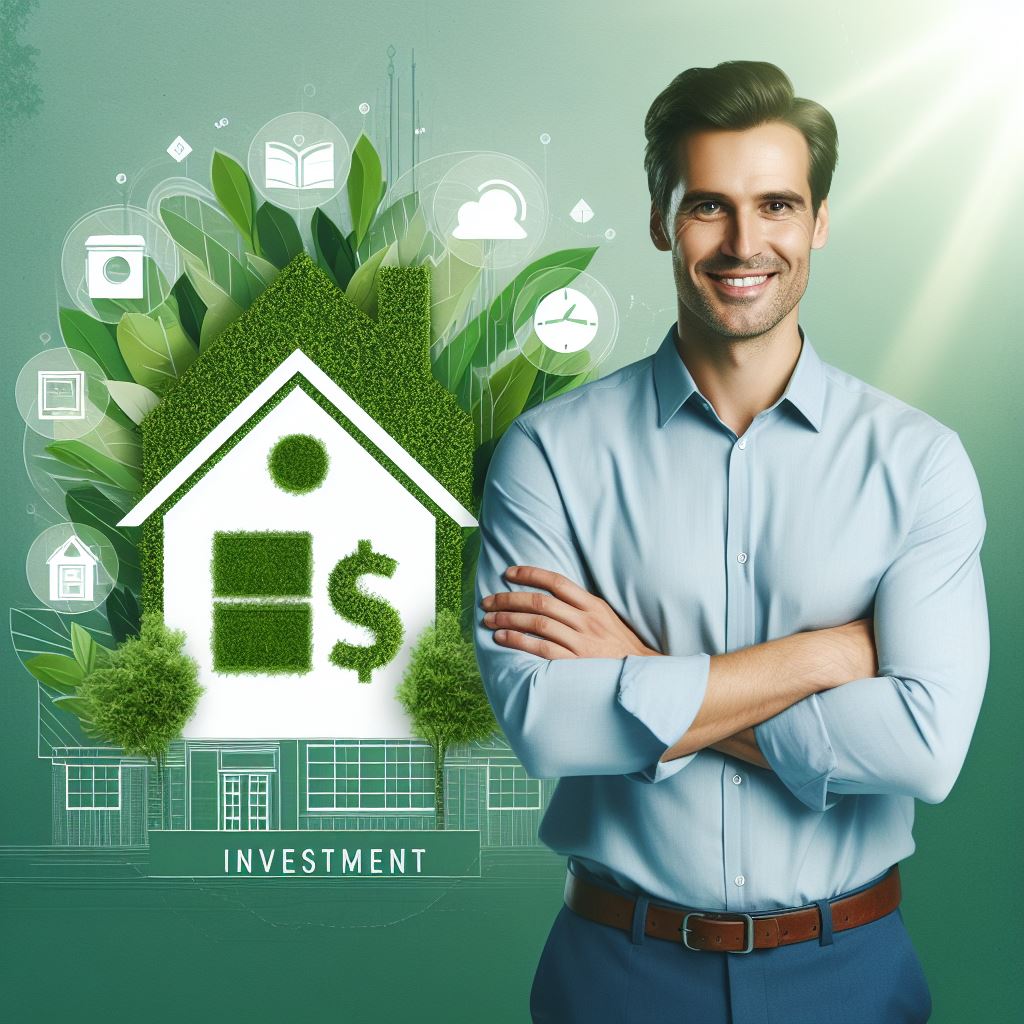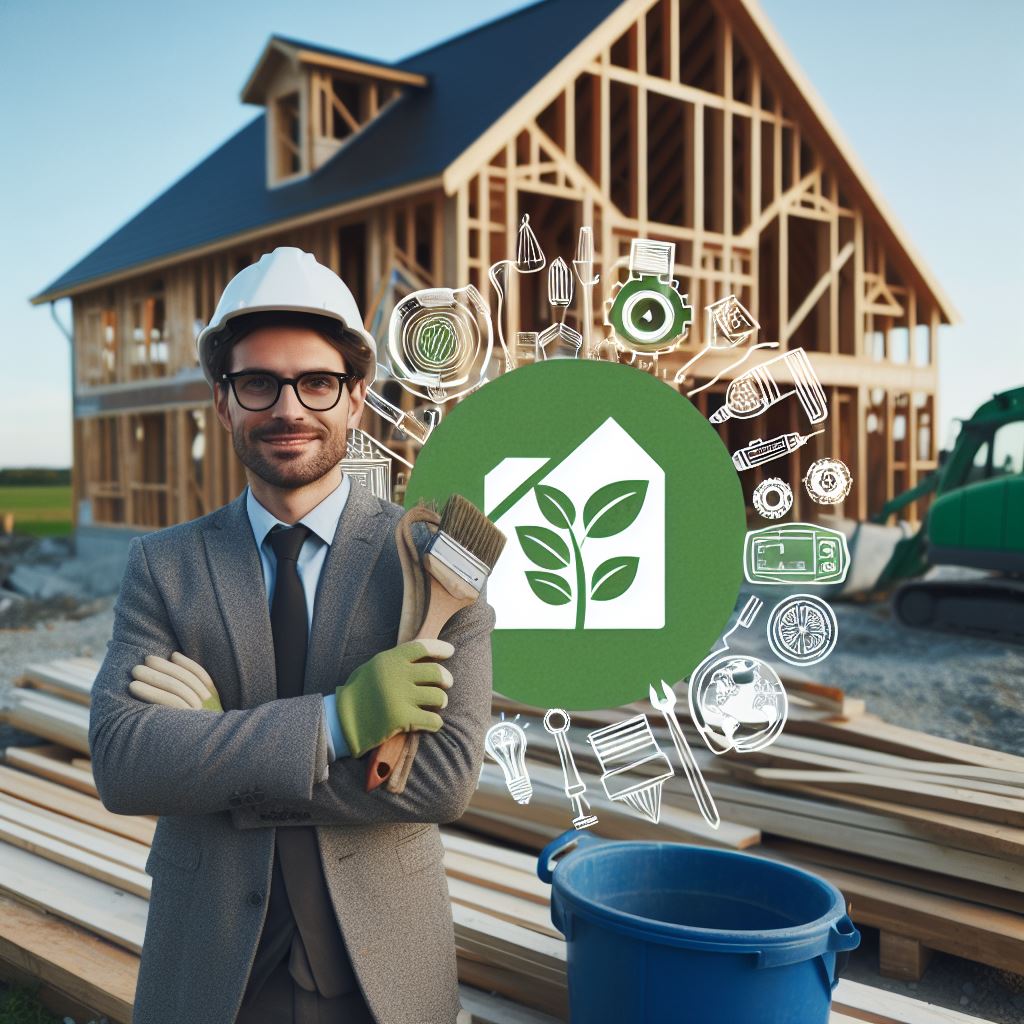Introduction
Green building standards refer to guidelines and criteria aimed at ensuring sustainable and environmentally-friendly construction practices.
These standards are crucial in the real estate industry as they promote energy efficiency, resource conservation, and improve indoor air quality.
Thesis statement: Green building standards have a significant impact on property values.
Green building standards play a crucial role in the real estate market by promoting sustainability and reducing environmental impact.
They are designed to enhance the overall quality of buildings while minimizing their carbon footprint.
These standards focus on various aspects, including energy efficiency, water conservation, and the use of eco-friendly materials.
By incorporating these principles, buildings can reduce energy consumption, lower utility costs, and create a healthier living environment for occupants.
Furthermore, green buildings often have higher resale values due to their reduced operating costs, increased durability, and improved indoor air quality.
Homebuyers are becoming more conscious of the environmental impact of their properties and are willing to pay a premium for sustainable features.
In addition, green buildings contribute to a healthier and more sustainable community.
By conserving resources and minimizing pollution, these buildings help preserve natural habitats and promote a more eco-friendly lifestyle.
Green building certifications, such as LEED (Leadership in Energy and Environmental Design), provide a standardized framework for evaluating and recognizing sustainable buildings.
These certifications serve as a valuable benchmark for property owners and investors, as they demonstrate the environmental performance and high-quality construction of a building.
In essence, green building standards have a significant impact on property values in the real estate market.
These standards not only promote sustainability and environmental responsibility but also lead to cost savings, improved occupant health, and higher resale values.
It is essential for developers and property owners to embrace green building practices to capitalize on these benefits and create a more sustainable future.
Benefits of Green Building Standards
Green building standards have become increasingly popular in recent years due to their numerous benefits.
These standards focus on reducing a building’s environmental impact while also improving its energy efficiency and overall sustainability.
By adhering to green building standards, property owners can enjoy a range of advantages, including:
- Energy efficiency: Green building standards prioritize energy efficiency by incorporating strategies and technologies that reduce a building’s energy consumption.
- Reducing utility bills: Energy-efficient buildings consume less electricity, which leads to reduced utility bills for property owners and tenants.
- Renewable energy usage: Green building standards often encourage the use of renewable energy sources, such as solar panels or wind turbines, to power buildings.
- Environmental sustainability: By implementing green building standards, property owners contribute to the preservation of natural resources and ecosystems.
- Preserving natural resources: Green buildings minimize resource consumption through methods like efficient water usage and sustainable materials.
- Reducing carbon footprint: Green building standards aim to reduce the carbon footprint of properties by minimizing greenhouse gas emissions during construction and operation.
- Improved indoor air quality: Green buildings prioritize proper ventilation, filtration systems, and pollutant reduction, leading to cleaner and healthier indoor air.
- Health benefits for residents: Green buildings provide better indoor environments, which contribute to improved occupant health and well-being.
Overall, green building standards offer substantial benefits to property owners, residents, and the environment.
These standards represent a commitment to sustainability and can have a significant positive impact on property values and the overall quality of life.
Read: Understanding Building Codes in Property Law
Green Building Standards and Property Values
Green building standards have become a topic of increasing interest in the real estate market.
Investors and homeowners alike are recognizing the numerous benefits associated with environmentally-friendly properties.
Increased Property Value
One of the most significant advantages of green building standards is the potential for increased property values.
Studies have shown that properties with green features tend to have a higher appraised value compared to traditional buildings.
These features include energy-efficient appliances, sustainable materials, and eco-friendly practices.
Additionally, green buildings often spend less time on the market, generating more interest from potential buyers.
Demand and Desirability
Furthermore, the demand and desirability of green buildings are on the rise.
Buyers who prioritize sustainability are attracted to properties with eco-friendly features, creating a higher level of interest.
Moreover, homes with green building standards have higher resale potential and can fetch better prices in the market.
This resale value not only benefits the initial property owner but can also lead to a higher return on investment in the long run.
Cost Savings for Homeowners
In addition to increased property values and demand, green buildings offer cost savings for homeowners.
Lower maintenance and operating costs are associated with efficient energy and water systems.
The installation of energy-efficient appliances and insulation reduces utility bills significantly.
Homeowners investing in green building standards may also be eligible for potential tax incentives.
These incentives can range from tax credits to deductions, further incentivizing the adoption of environmentally-friendly practices.
In fact, green building standards have a positive impact on property values and desirability.
Investing in eco-friendly features not only increases appraised value but also reduces time on the market.
Homeowners can enjoy significant cost savings through lower maintenance and operating costs.
Additionally, tax incentives further encourage the implementation of green building standards.
As the market continues to prioritize sustainability, properties with green features are becoming increasingly attractive to homebuyers and investors.
Read: Construction Law: Liability & Insurance
Case Studies and Examples
LEED-certified buildings
LEED-certified buildings have been instrumental in demonstrating increased value and demand.
Numerous studies have shown that these buildings consistently outperform their non-certified counterparts in terms of property values.
One such study conducted by the University of California, Berkeley, analyzed the impact of LEED certification on commercial office buildings in Los Angeles.
The results revealed that LEED-certified buildings had an 8% higher rental rate and a 13% higher resale value compared to non-certified buildings.
In addition to financial benefits, LEED-certified buildings also offer a range of environmental advantages.
These include reduced energy consumption, lower water usage, and improved indoor air quality.
These factors contribute to the overall appeal and desirability of these properties, further driving up their value.
Successful projects like the Bank of America Tower in New York City and the Bullitt Center in Seattle have also showcased the positive impact of green building on property values.
The Bank of America Tower, a LEED Platinum-certified building, has become one of the most sought-after office spaces in the city, commanding premium rents.
Similarly, the Bullitt Center, which was the first commercial office building in the world to achieve Living Building Challenge certification, has proven the feasibility and profitability of sustainable construction.
The building boasts 100% solar power, rainwater harvesting, and composting toilets, making it a model for green design.
Energy-efficient homes
Energy-efficient homes have also witnessed a surge in demand and property values.
A study conducted by the National Association of Home Builders (NAHB) found that homes with energy-efficient features, such as high-performance windows and insulation, had a 9% higher value compared to traditional homes.
The NAHB study also revealed that homebuyers were not only willing to pay premiums for energy-efficient homes but also showed a preference for these properties.
They acknowledged the long-term cost savings, improved comfort, and reduced environmental impact associated with energy-efficient features.
Furthermore, the growing awareness of climate change and environmental sustainability has resulted in an increased demand for green homes.
Homebuyers are actively seeking out green features like solar panels, energy-efficient appliances, and sustainable materials, all of which contribute to higher property values.
In short, case studies and examples offer compelling evidence that green building standards have a positive impact on property values.
LEED-certified buildings and energy-efficient homes not only command higher prices but also attract a larger pool of potential buyers.
As sustainable building practices continue to evolve, it is likely that the trend of increased property values will only continue to grow.
Read: Easements in Real Estate Explained

Challenges and Limitations
Green buildings have gained prominence in recent years due to their environmental benefits and potential cost savings.
However, several challenges and limitations hinder their widespread implementation.
Understanding these obstacles is vital for effectively promoting green building standards and maximizing their positive impact on property values.
Initial Costs
One of the primary hurdles associated with green buildings is the initial costs.
Implementing sustainable features and materials often leads to higher construction expenses compared to conventional buildings.
This can deter developers and property owners who prioritize short-term financial savings over long-term benefits.
Higher Construction Expenses
The higher construction expenses associated with green buildings can directly impact the return on investment.
However, it is essential to consider the long-term advantages.
Green buildings are designed to be energy-efficient, lowering utility bills and reducing maintenance costs over time.
They also offer a healthier and more comfortable living or working environment.
Proper education about these long-term benefits can help potential buyers and sellers make more informed decisions.
Lack of Awareness and Education
Unfortunately, there is a lack of awareness and education about green building standards among the general public.
Many individuals are unaware of the environmental and economic advantages provided by sustainable construction and design.
Without this knowledge, individuals may not consider green buildings as a viable option when buying or developing properties.
Limited Understanding Among Buyers and Sellers
Limited understanding among buyers and sellers poses another significant challenge.
Even if individuals are aware of green building standards, they may not fully understand their importance or how they can impact property values.
Many buyers and sellers focus on immediate financial considerations, overlooking the potential long-term benefits and improved market value associated with green buildings.
Importance of Spreading Awareness and Promoting Green Building Standards
To overcome these challenges and limitations, spreading awareness about green building standards is crucial.
Education campaigns and public outreach programs can help inform the public about the advantages of sustainable construction.
Promoting the economic benefits, such as reduced energy costs and increased property value, can incentivize individuals to adopt green building practices.
Government agencies, industry associations, and organizations focused on sustainability should collaborate to develop educational resources and training programs.
These initiatives can target different stakeholders, including real estate professionals, homeowners, and developers.
Providing them with the necessary information and tools can facilitate the integration of green building practices and increase the demand for environmentally responsible properties.
In a nutshell, green building standards face challenges and limitations such as higher initial costs, limited understanding among buyers and sellers, and a lack of awareness and education.
However, by emphasizing the long-term benefits and promoting green building standards through education and outreach, these challenges can be overcome.
Encouraging the adoption of sustainable building practices is essential for creating a more environmentally friendly and economically viable future.
Read: Resolving Disputes in Construction Projects
Conclusion
Green building standards offer numerous benefits for property owners and the real estate industry as a whole.
By adhering to these standards, property owners can improve energy efficiency, reduce operating costs, and enhance the overall quality of a building.
This, in turn, leads to a strong connection between green building practices and increased property values.
Property values are influenced by factors such as location, aesthetics, and amenities.
However, the sustainability and energy efficiency of a building have become increasingly important considerations for buyers and tenants.
Green buildings not only provide cost savings but also promote a healthier living and working environment, making them highly appealing to potential buyers and tenants.
Therefore, it is crucial for real estate stakeholders, including property owners, developers, and investors, to prioritize sustainability in their projects.
By incorporating green building practices, stakeholders can not only maximize the value of their properties but also contribute to the environmental well-being of their communities.
Ultimately, the integration of green building standards can bring about long-term financial stability and success for property owners and the real estate industry as a whole.
As green buildings continue to gain popularity and public recognition, it is imperative that real estate stakeholders embrace sustainability to ensure their properties remain competitive in the market.
The time is now to prioritize sustainability and unlock the full potential of property values through green building practices.




